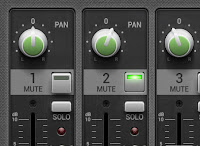One of the big behind the scenes problems in audio today is survivable archives. While some magnetic tape has proved to be remarkably robust even 60 years later, some has been as fragile as tissue paper, and all of it will eventually lose much of its magnetism over time. It's even worse in the digital domain as we've replaced formats and storage devices frequently, especially in the early days of digital. Much from those early formats haven't fared nearly as well as their older analog counterparts when it comes to long-term storage and retrieval.
Today artists, producers, record labels, television networks, film studios, museums and even national archives all face the same question; what format do we use to preserve our products for as long as possible. Currently there isn't one preferred method in use, and no one is totally sure of the lifespan of any available, and that's the problem. But maybe a new answer is finally on the horizon, thanks to researches at the
Optoelectronics Research Center at the
University of Southampton in the UK.
Enter the "
Superman Memory Crystal," a newly developed data storage method that can hold as much as 360 terabytes for more than a million years. Not only that, it has the ability to withstand extreme temperatures, and has an extremely fast read and write time thanks to a super fast femtosecond laser.
The Crystal's ability for storage comes from the fact that the laser writes data in 5 dimensions; size, orientation, and 3 dimensions of position of its nanostructures. The format is based on a relatively new technology known as "
femtoprint," which is nanoscale printing on fabricated glass. If you're really a nerd, you can
read a white paper outlining its inner workings.
Unfortunately the technology is still in the lab, so we may not see it for a while, but it could be that our long-term storage problems are on the verge of being solved.
----------------------------------



